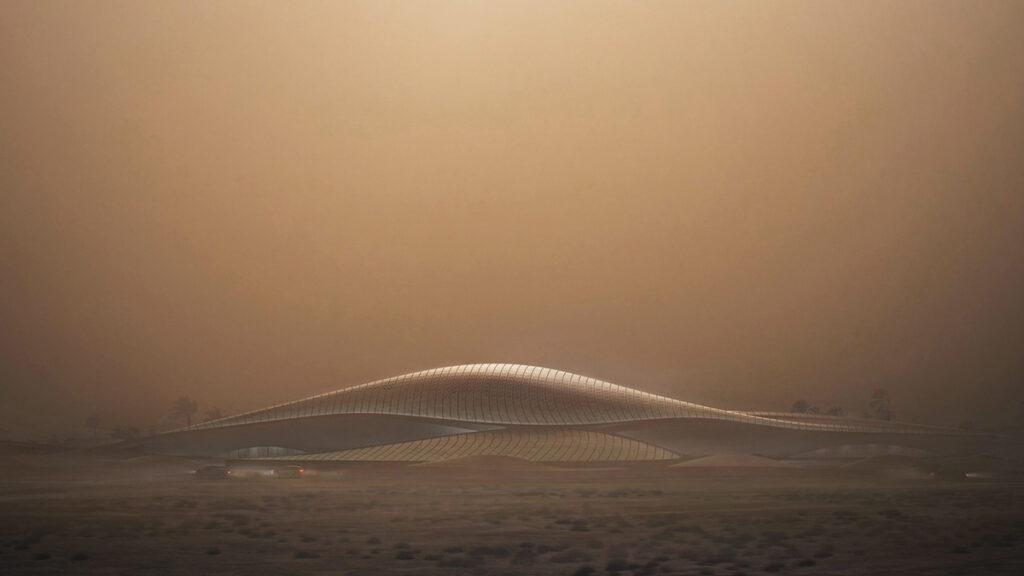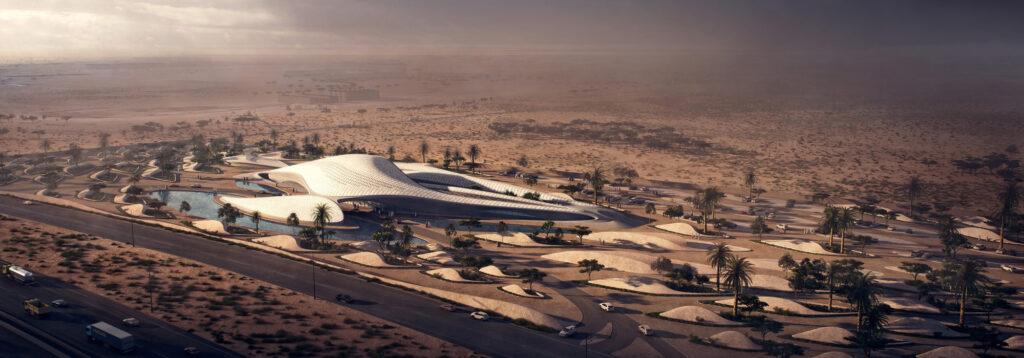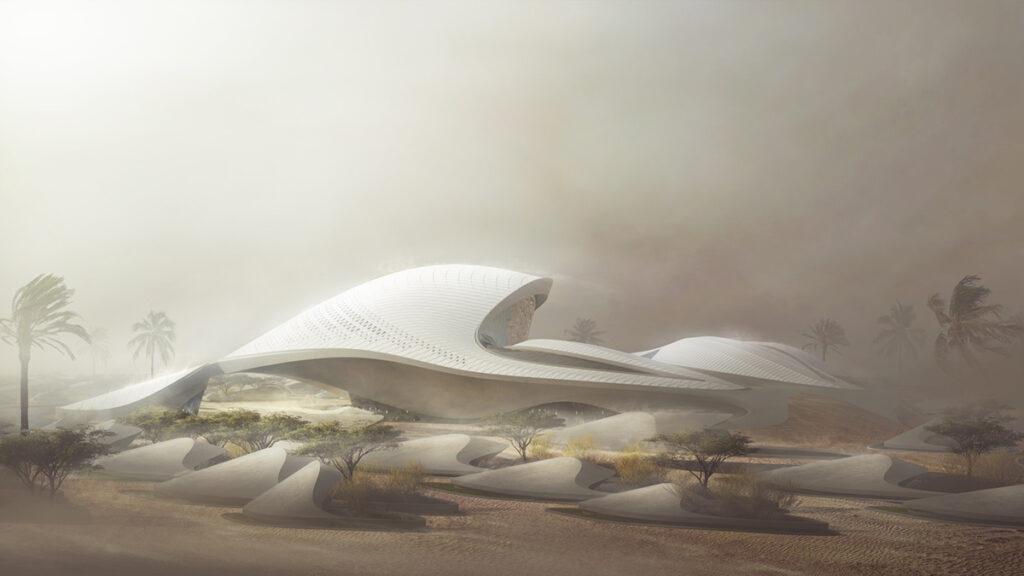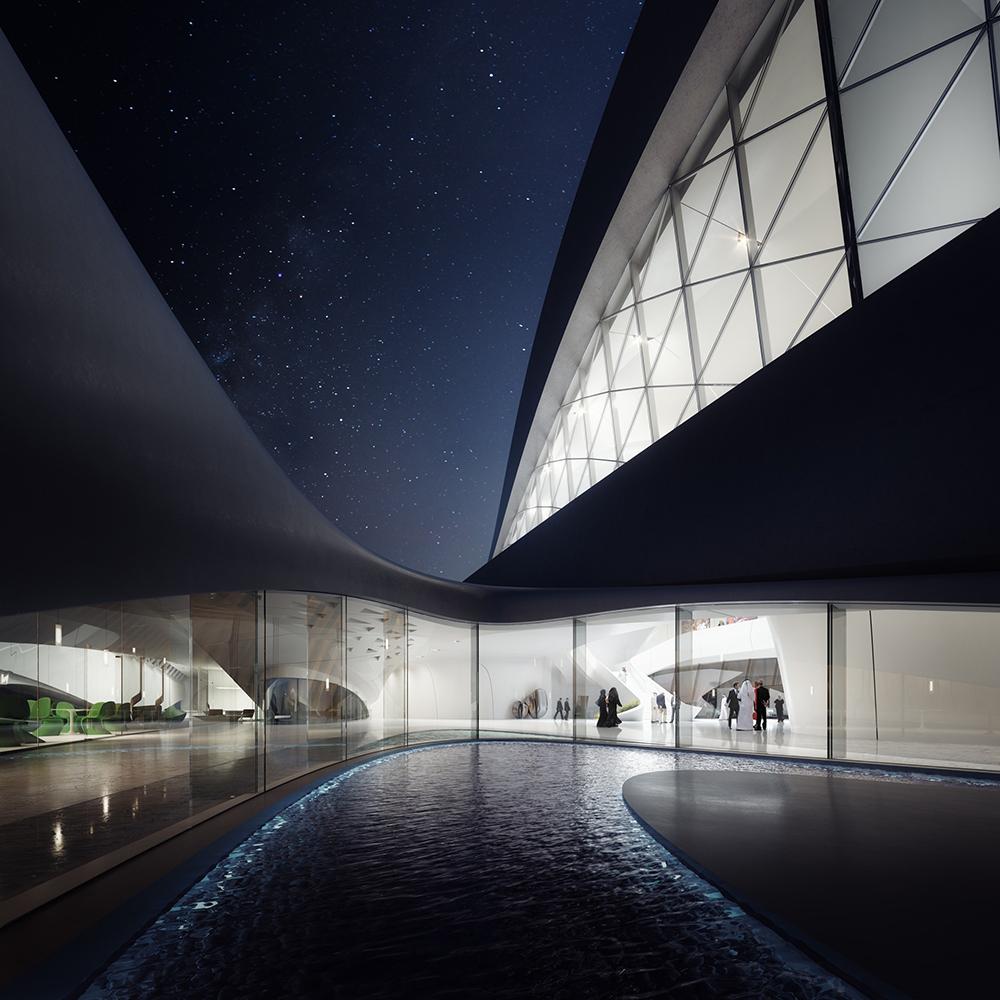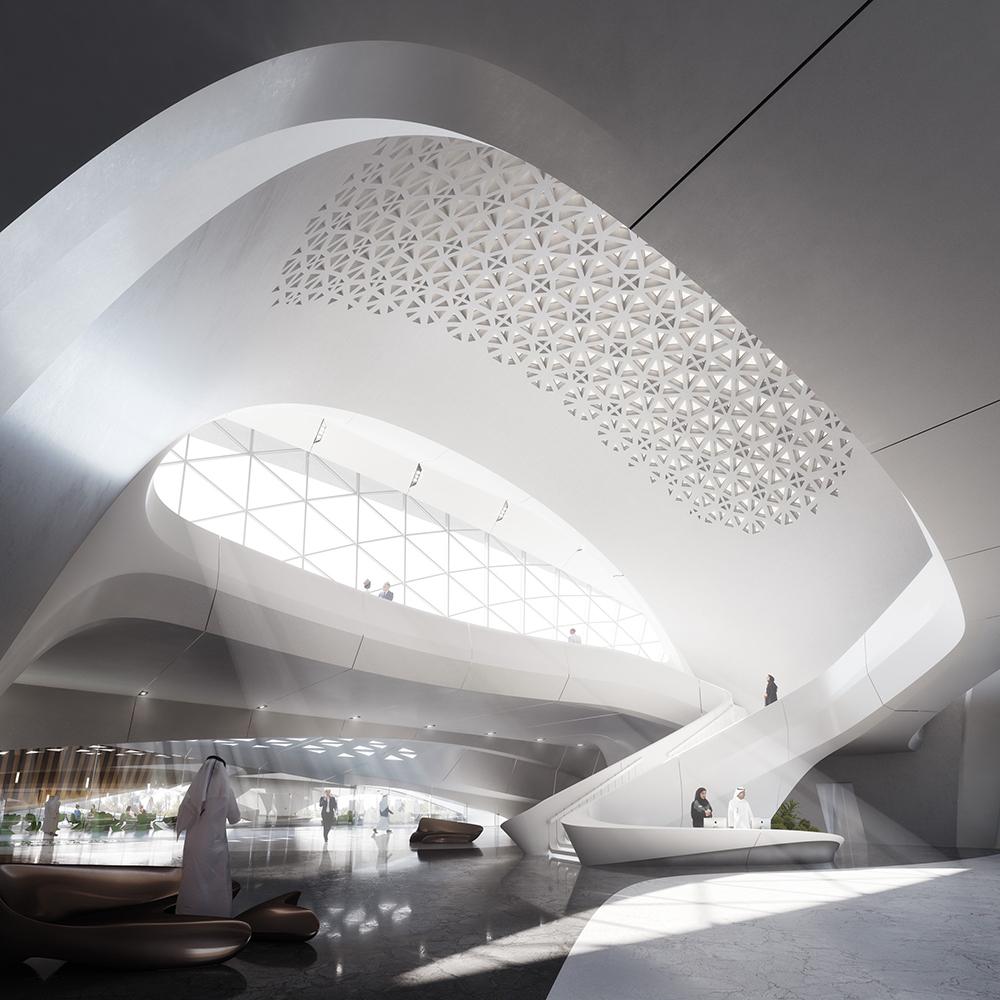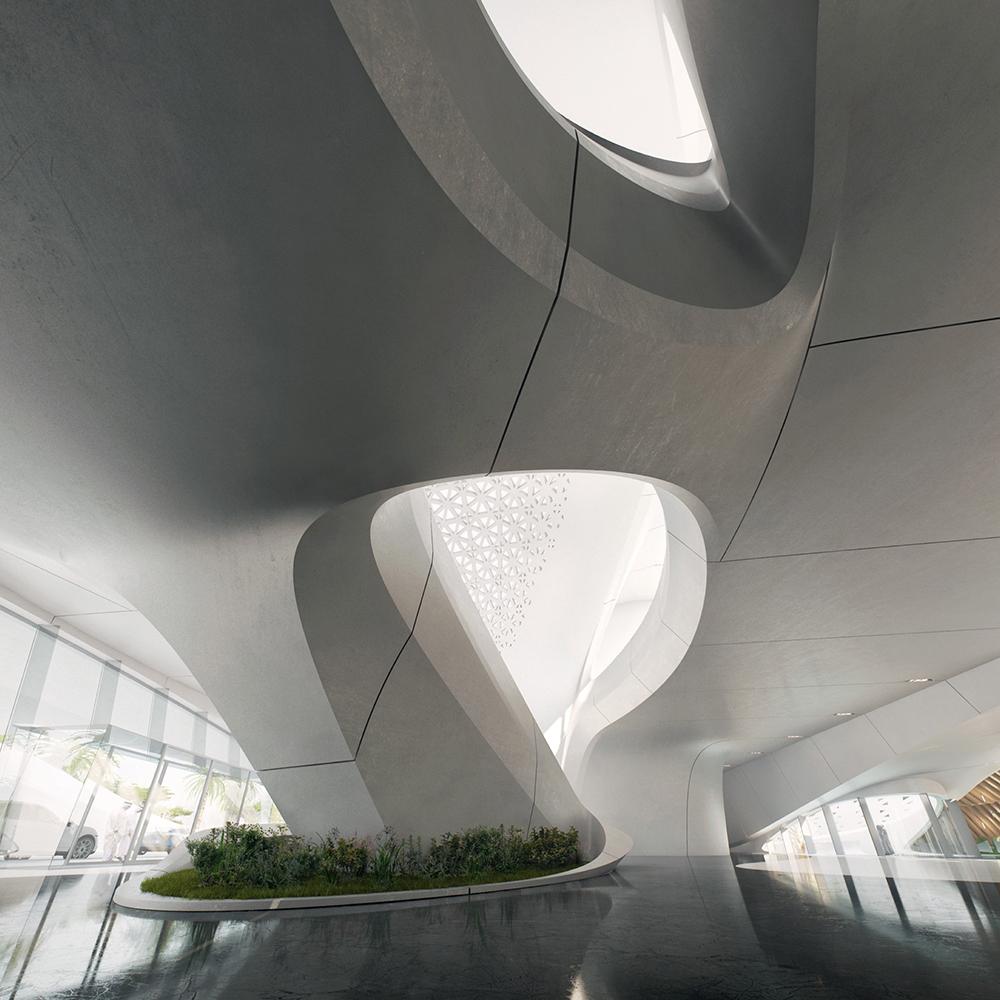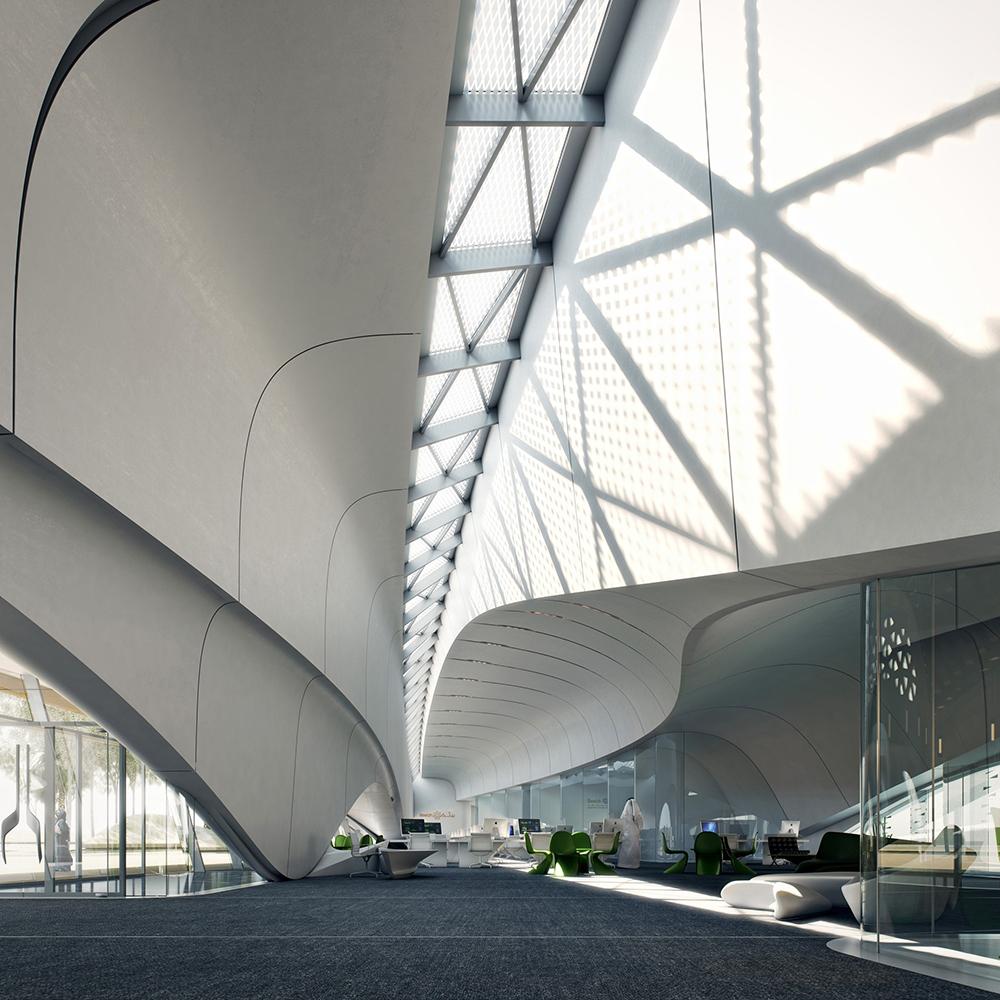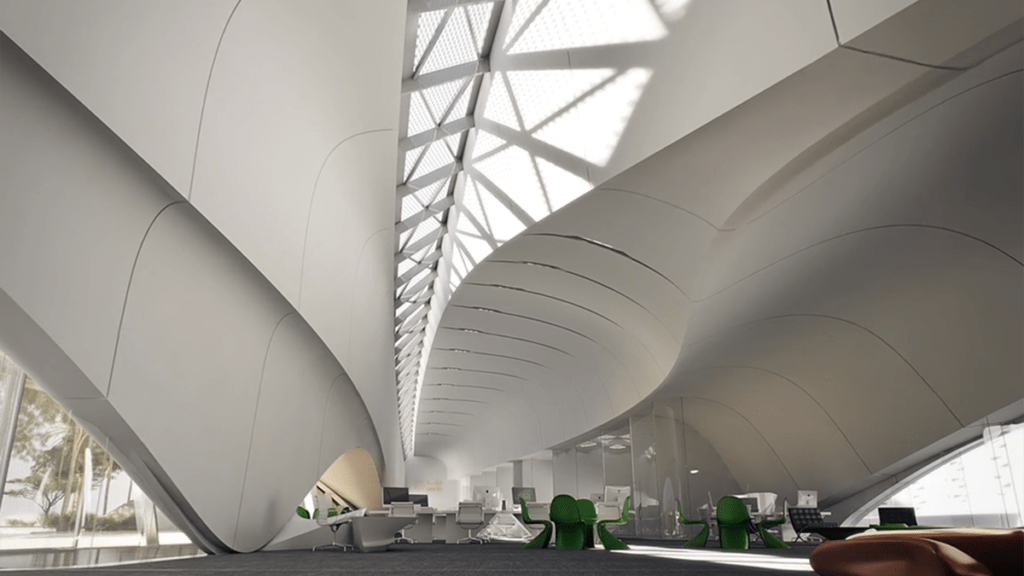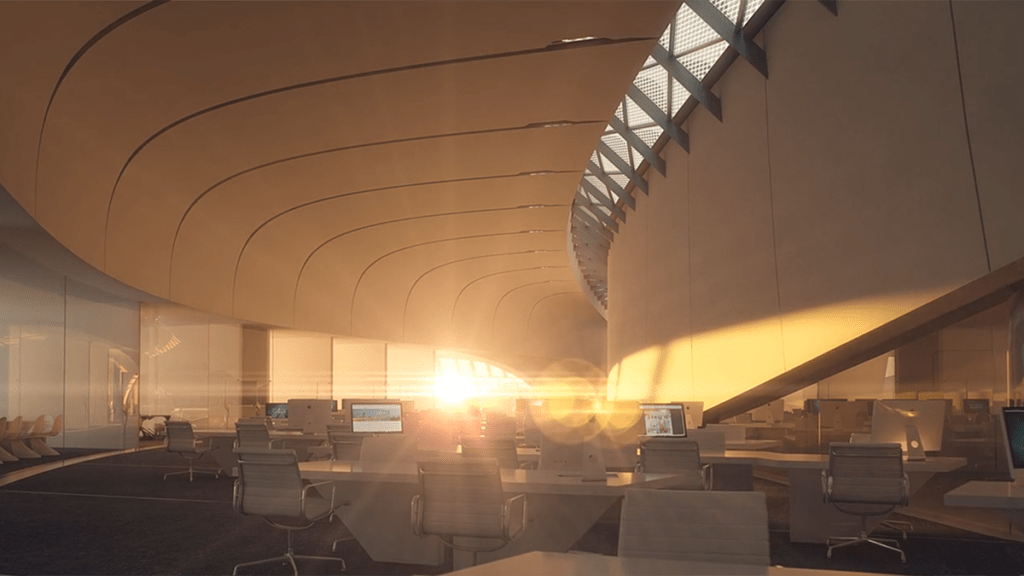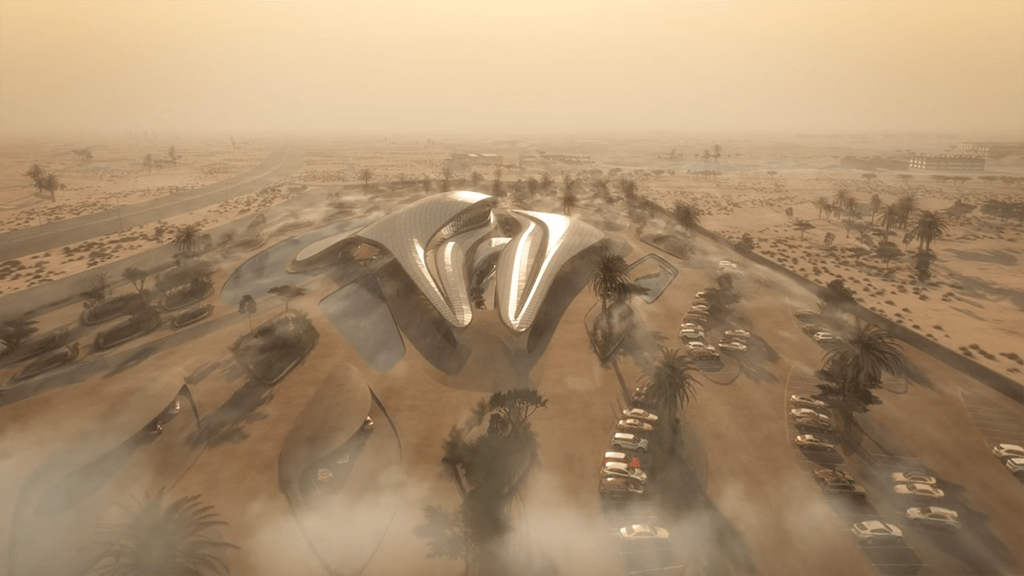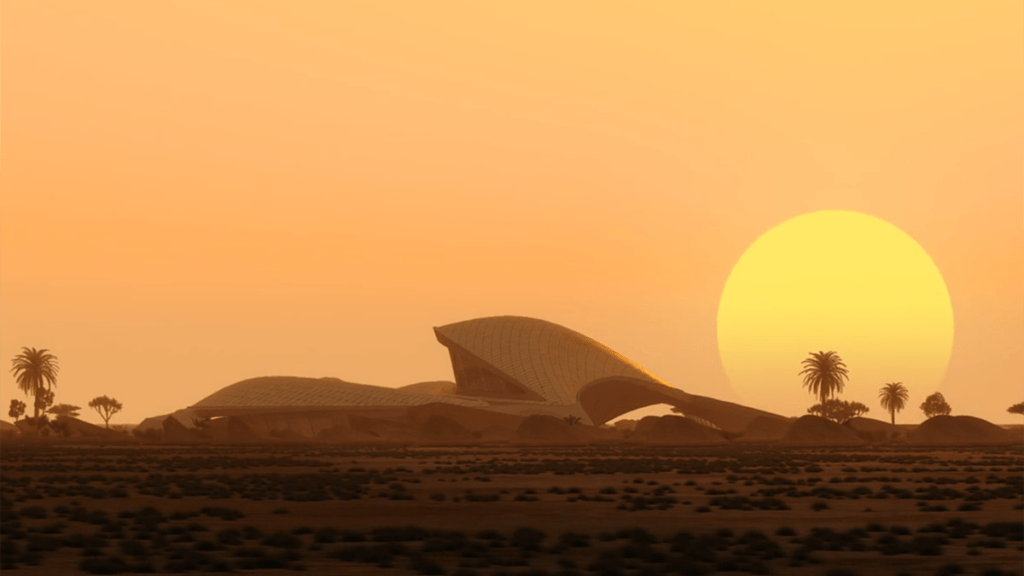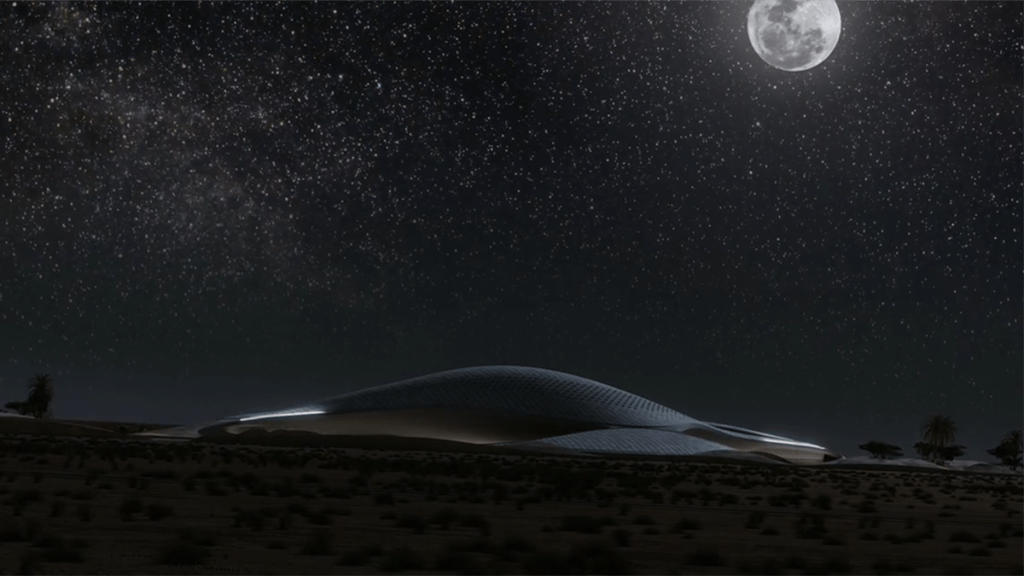Zaha Hadid’s intelligent dunes
Zaha Hadid Architects are planting the new headquarters of waste management company Bee’ah in the middle of the Arabian desert. An ecological megaproject packed full of artificial intelligence.
When National Geographic sends a TV crew over every month for several years, you can’t help but sit up and take notice. After all, the internationally renowned media company only follows truly extraordinary projects. And the building of Bee’ah’s new company headquarters in the United Arab Emirates is truly extraordinary. For many reasons.
Zaha Hadid’s client
Before we look at the futuristic concept by Zaha Hadid Architects, which has been under construction for several months, let’s take a look behind the scenes of the mega-building in the middle of the Arabian desert. Because to really understand this building, you first have to take a closer look at the client.
After all, they are no more ordinary than the complex commissioned by them: the company was founded in 2007 as an environmental and waste management company under the name Bee’ah. This was by decree of the Emir, His Highness Sheikh Dr Sultan bin Muhammed Al-Qasimi, Member of the Supreme Council of the United Arab Emirates and Ruler of the Emirate of Sharjah.
Surprising development
Under his supervision, Bee’ah then developed in an unusual and all the more pleasing direction for the United Arab Emirates. Very quickly, intensive efforts were made to put waste disposal on an internationally unique, sustainable footing.
Today, Bee’ah is working towards the goal of recycling 100% of the waste produced in the municipality and generating additional renewable energy. According to official statements, Bee’ah’s aspiration is to “deliver coherent and sustainable environmental solutions to meet the challenges of the community it serves.”
It’s therefore no surprise that the new headquarters have to contribute to these core values, which are omnipresent in the company. But this goal was not enough. The new Bee’ah HQ needed to strive to change the attitudes and behaviours of individuals, communities, companies and cities for the better. The aim is to provide the infrastructure and create the opportunities necessary to help society actively participate in achieving the environmental goals.
Zaha Hadid Architects incorporate AI
From today’s perspective, it is not yet possible to say exactly what this official statement will mean in the end. But the project details published so far suggest that the most advanced possibilities in terms of environmental protection are being exhausted, and not only from an architectural point of view. At any rate, “artificial intelligence” (AI) will play a major role. But more on that later.
Let’s stick to the obvious first of all – the building itself. This embodies Bee’ah’s ecologically superior principles in a concentrated way. Zaha Hadid Architects thus designed a showcase project – a building constructed using minimal materials and operated with ultra-low carbon and water consumption.
Dunes as the shape of choice
Nevertheless, the location was of course a factor. And this, the desert, is just as unusual as the rest of the basic conditions. “The formal composition of the new Bee’ah headquarters building has been informed by its desert context as a series of intersecting dunes,” say the architects from Zaha Hadid Architects, describing their visual approach. Incidentally, the building has been designed so as to make optimal use of the Shamal winds, which occur several times a year; in other words it uses them to cool itself. In addition, the artificial dunes have been positioned to provide the interiors with as much high-quality daylight as possible without exposing glass surfaces that are too large to the intense sunlight.
What’s more, the two central dunes of the main building form an oasis-like courtyard where they intersect. This will provide natural ventilation to both complexes and maximise indirect solar radiation into the rooms further inside.
100% green energy
The architects set another noble goal in terms of building materials: not only should 100% green energy be used for construction, but the work is to be carried out almost exclusively with materials recycled from waste! This will be achieved by, among other things, expanding the existing waste management centre at the same time as construction. This means that the material recovery plant has been expanded to become the third largest in the world. The recycling plant for construction and demolition waste is now one of the most advanced facilities internationally and the tyre recycling plant is not only the first of its kind in the region, it also uses a low-temperature, particularly eco-friendly process.
All about efficiency
The composting plant, the industrial and wastewater lagoons for processing liquid waste, and the end-of-life vehicle and metal shredding plant are also cutting edge. All these facets are to be given a further upgrade with the construction of the new headquarters. The architects are sure that it will be possible to operate these even more efficiently.
Which brings us back to the new building itself. In the milder months, its façade can be operated in a way that allows natural ventilation, minimising the need to cool the building. If air conditioning is required, however, a special form of energy recovery will be used. This allows fresh air to flow into the rooms, with lower energy consumption, and removes the waste heat that would normally be released into the atmosphere by the cooling units. This waste heat will now be used to provide free hot water.
Reflective roof structure
But the most relevant aspect of a desert building in terms of thermal energy is without doubt the exterior façade. For this, a special material was chosen that reflects the sun’s rays to a large extent. This reduces energy consumption further. In concrete terms, this means that the roof surfaces of the artificial dunes will have a similar thermal profile to the real dunes in the neighbourhood.
These active and passive energy approaches are calculated to reduce the entire building’s energy consumption by 30%. The remaining 70% is covered either by the conversion of municipal waste (which would otherwise rot in landfills) into energy or by the photovoltaic system built on site.
Computer takes control
As far as the different chains of use for energy, drinking water and its treatment, cooling and so on are concerned, we could probably go into much more detail here. But you would probably lose track of everything pretty quickly. The fact is that this building is one of a kind. What’s more, it will take more than a traditional team of caretakers to control the different aspects and systems. It was partly for these reasons, but above all to push the functionalities to the limit, that Microsoft was brought on board as a partner. The aim: to pack the futuristic desert building with as much artificial intelligence as possible.
Bee’ah’s Group CEO Khaled Al Huraimel postulated: “Environmental sustainability and digital technologies are mutually inclusive factors in driving an economy of the future. Our new headquarters will embody our vision for this future and exemplify the most sustainable solutions and advanced technologies, with no compromise on innovation or delivery. This will be the first building in the UAE and MENA region, and one of the first in the world, to have full integration with AI to support new seamless experiences for optimization of efficiencies, performance and functionality.”
AI as the concierge
Put simply, this means that every unit, no matter how small, in the 7,000 square metre complex will constantly collect data, from which the “home computer” boasting colossal computing power will constantly make decisions. About room temperatures. Water transport. Opening and closing windows. And so on.
The same computer will also take care of the entire concierge service. It will allow employees access, guide guests through the maze of corridors and help find free meeting rooms. It should create a “pleasant environment for those present”.
What exactly the system will be capable of will remain Microsoft’s and the executing company Johnson Controls’ secret until it is complete. But in any case, we will all be able to get a glimpse of this “office of the future” at the touch of a button. After all, there’s guaranteed to be an in-depth National Geographic documentary soon after the as-yet-unscheduled opening.
For convenient streaming at home, of course.
Text: Johannes Stühlinger
Images: Zaha Hadid Architects/Luke Hayes
